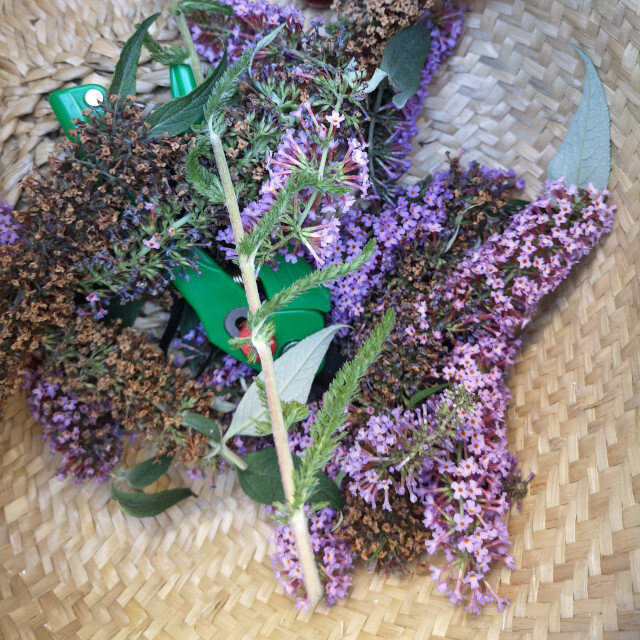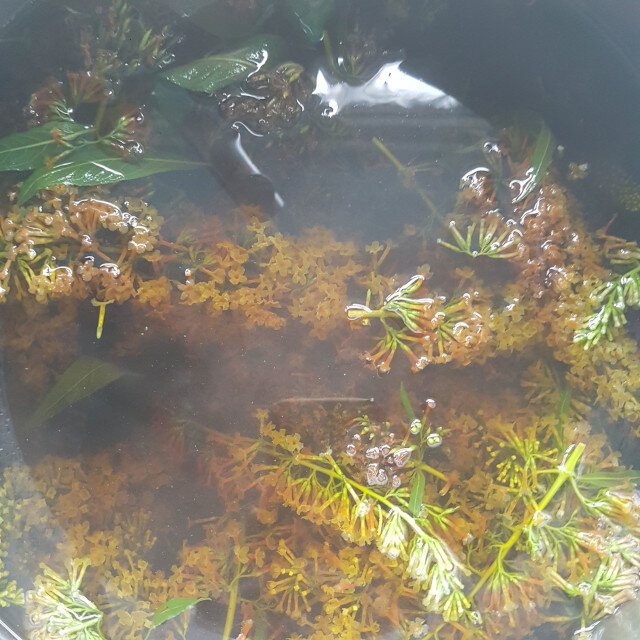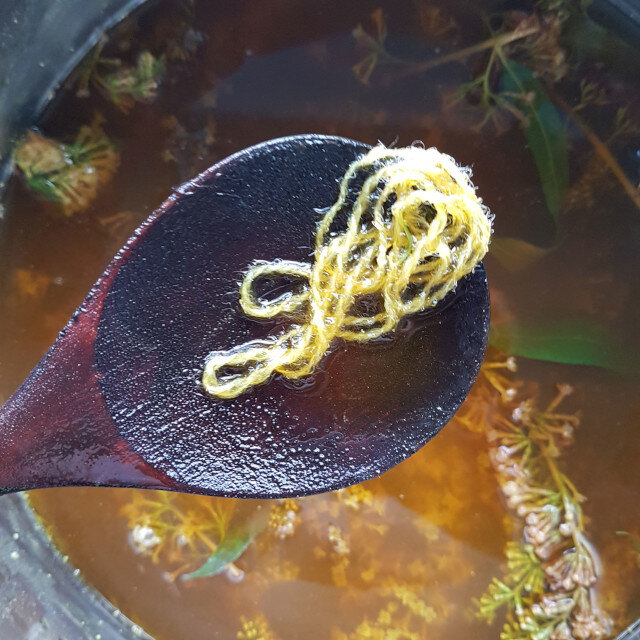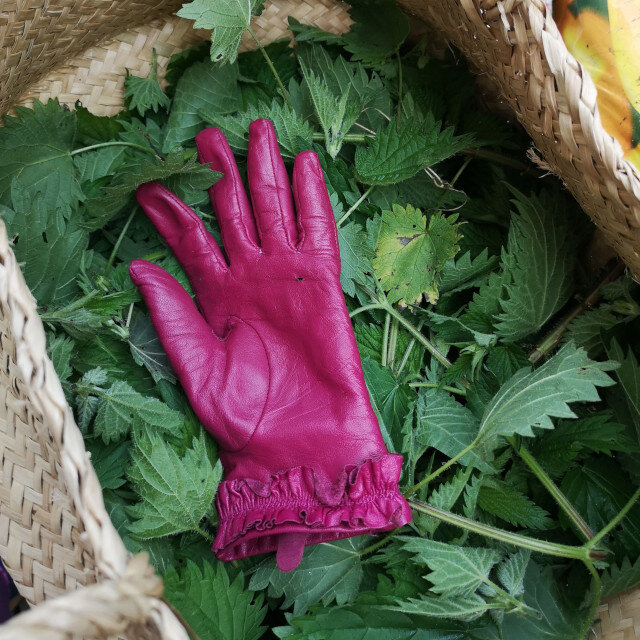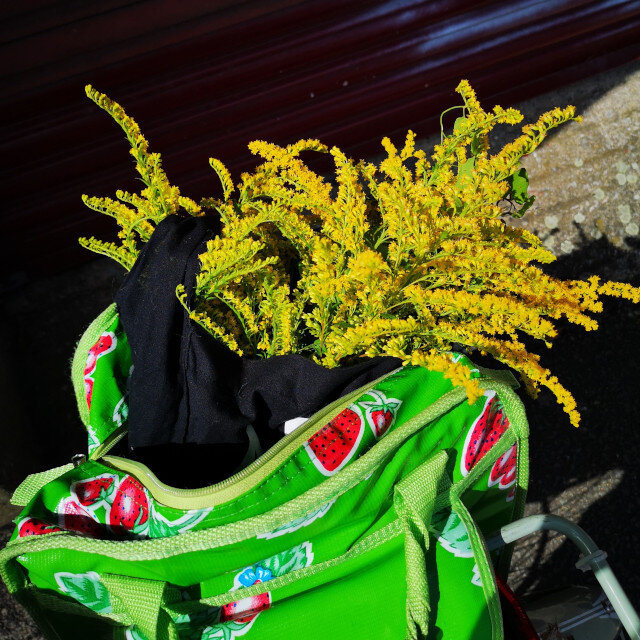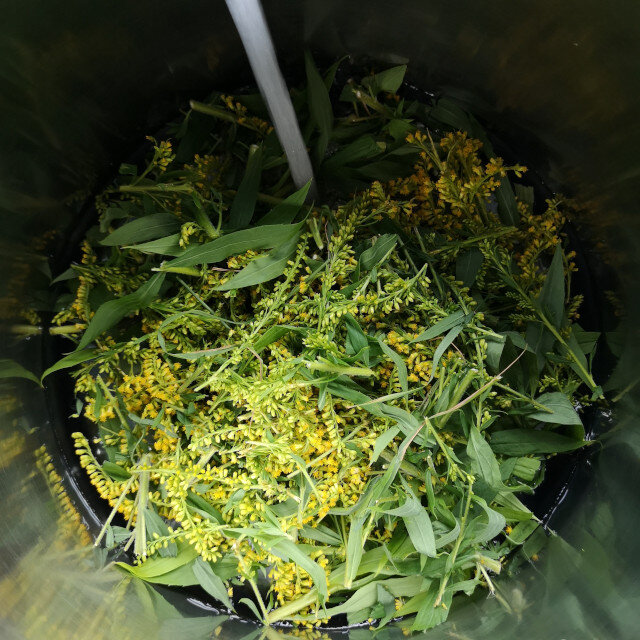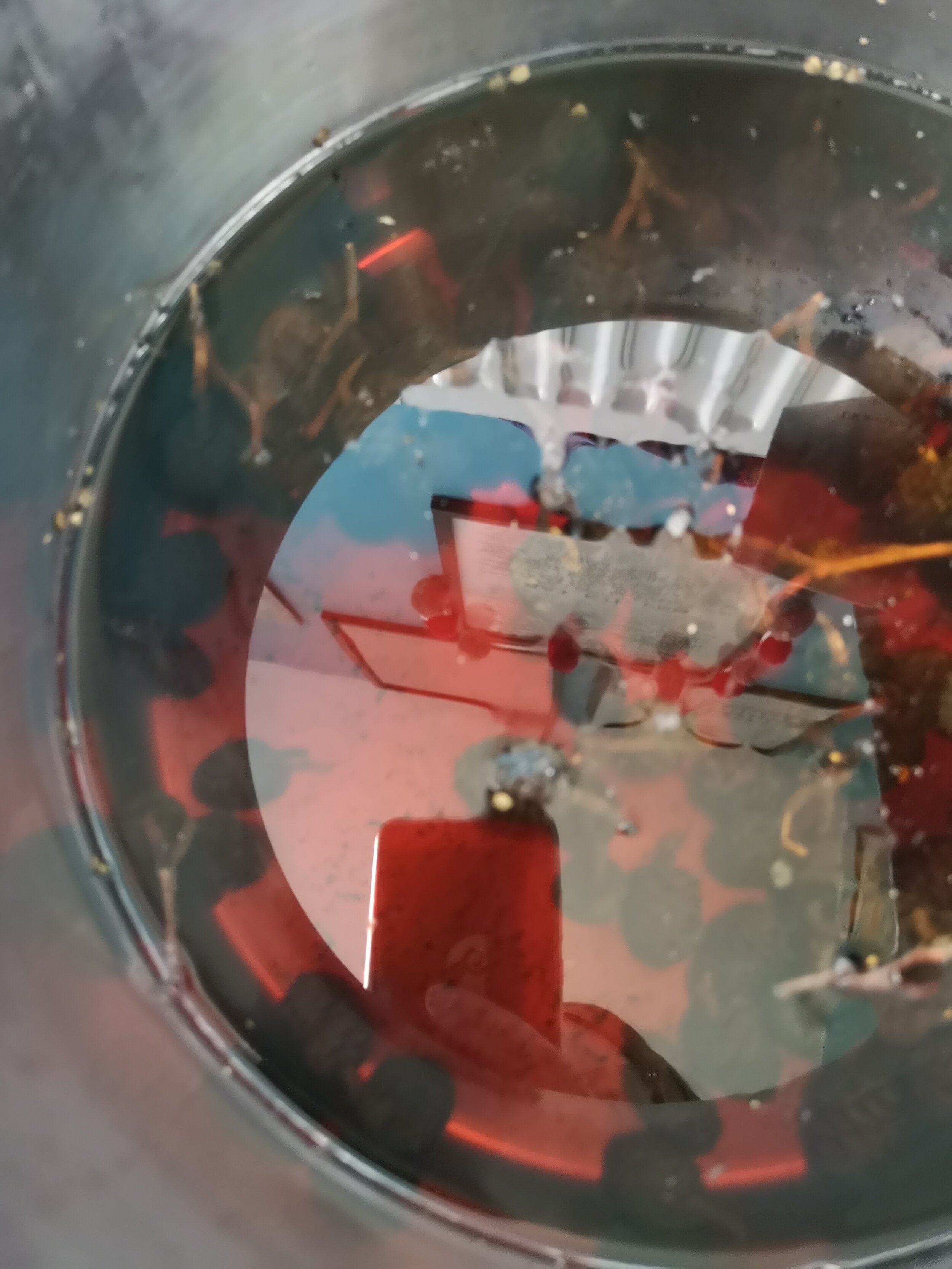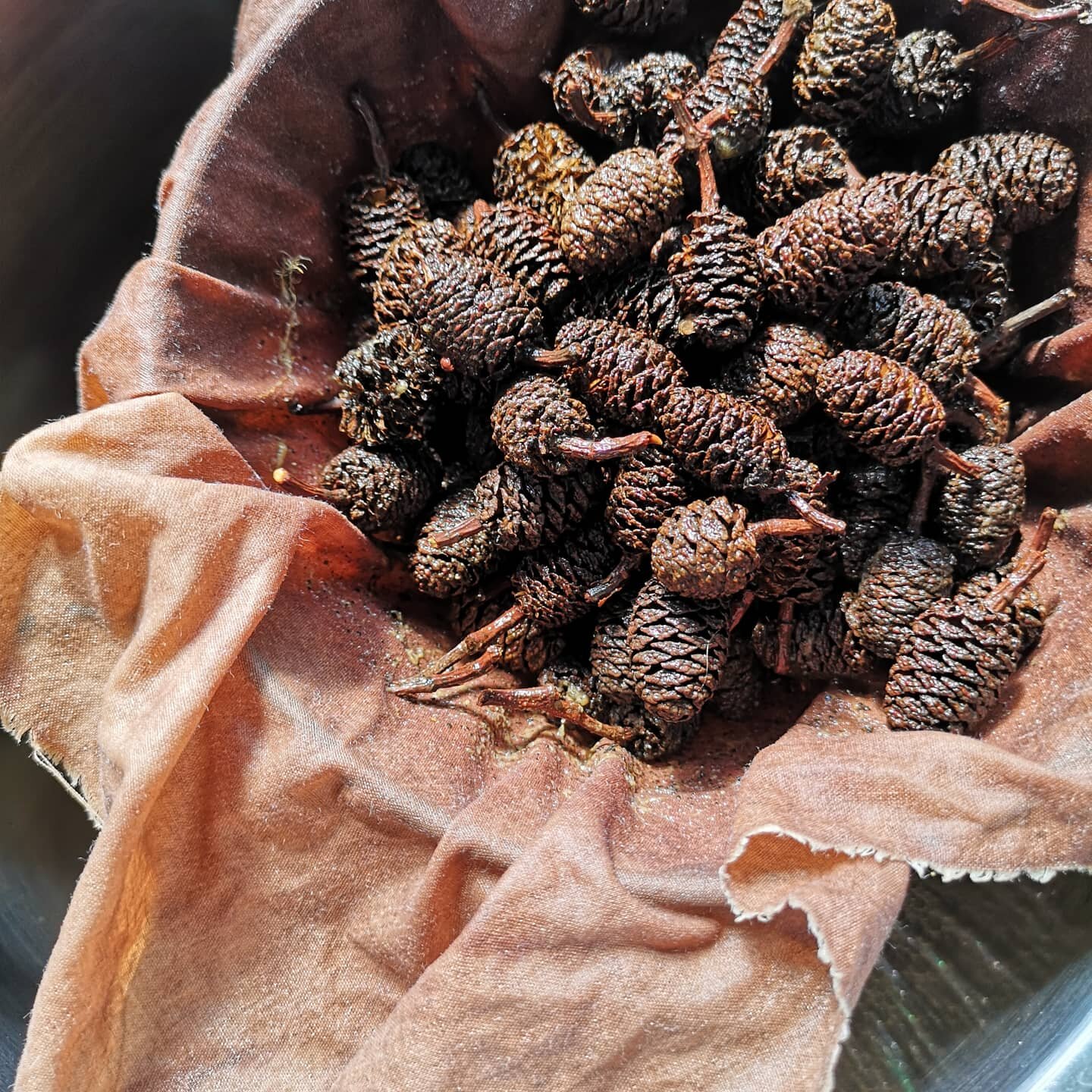Five Dye Plants to Forage in Bristol Hedgerows (and Beyond)
It’s summer here in the UK, and the hedgerows around Bristol are alive with plant life. Many of these common ‘weeds’, trees and flowers can be used as natural dyes, providing you with a free source of botanical colour. My favourite foraging area of the Bristol – the Bristol and Bath Railway Path is full of forageable natural dye plants! This blog outlines my five current favourites, although there are many more than this.
Although I now grow most of the dye plants I use in my business in my Bristol back garden, I still forage to supplement this growing, particularly in Spring and early summer when many of my plants are months away from harvesting. Also, as many of the top five are considered ‘weeds’, I don’t need to grow them in my garden (and probably don’t want them), as they grow freely and frequently in the wild.
Foraging for natural dyes may take time at first, and feel a bit intimidating, but the more you do it the more confidence you’ll have in identifying plants that are perfect for the dye pot. When I first started foraging for dyes, I felt self-conscious, but soon realised it’s no different to picking elderflowers or blackberries – you just might have to answer a few more questions as to why you’re picking weeds!
Before I introduce you to my top five forageable dye plants in Bristol (and beyond), it’s important to share some advice around foraging responsibly:
Don’t take more than you need, and spread your picking out throughout a patch of plants. If there are only one or two plants there, leave it to set seed and it will grow back in larger quantities next year!
Always get the landowners permission if you are not on public/common land. Check with your local authorities.
Make sure you can confidently identify the plant. Certain plants, such as cow parsley, have many siblings within the same plant family that can be harmful. Apps like PlantNet can help you to ID a plant, but do not rely on them to be true. If you’re not sure, don’t risk it.
Be mindful of the local wildlife and insect population, do not damage habitats.
After picking the plants, leave them outside for a couple of hours, to let any insect life escape before you add the plants to the dye pot.
Buddleia
Buddleia shrub - sometimes called Buddleja
This sweet smelling purple flower is everywhere in Bristol! Allegedly it was mostly spread via the railway network, so it makes sense that this invasive shrub is all over the Bristol to Bath railway path. Both the leaves and the flowers make for good dyes, but I’ve found that the strongest colours are to be found in the flower heads.
Buddleia is a great source of food for pollinators, particularly bees, so do be mindful when picking head of these flowers and leave plenty for them. It’s a good idea to pick the flower heads as they are starting to fade to reduce disruption to the pollinator food supply.
Wool yarn dyed with Buddleia: L = hot dye, alum mordant R = cold dye, alum mordant
I have used buddleia flower heads in both cold and hot dye baths, which have yielded different results. As a general rule, I use equal weight of plant to fibre (e.g. 100g grams of flower heads to 100g yarn), but you can increase the percentage of plant material to get a stronger colour.
Dye from buddleia flowers produces a very strong yellow both with or without a mordant, although I advise using an alum mordant to ensure a long lasting colour.
Top tip for success: The white and yellow flower producing buddleias make the same colour as the more common purple ones.
2. Dock Leaves
The dock plant (Rumex)
Dock leaves from the allotment
Docks are an absolute hero dye plant in my opinion. As well as being able to dye with the leaves, you can use both the roots and seeds to produce different colours. As they grow most of the year round, you are also fairly likely to reliably find them on roadsides and in hedgerows.
I acquired a allotment in April this year, after 6 years on the Bristol waiting list. Unsurprisingly, it was rather overgrown with weeds. I found that lots of docks were thriving there, which is an indicator of good soil quality. Whilst they can be a nuisance for the gardener due to their deep tap root that can be hard to remove, we had to get rid of them in order to make space for vegetables at the allotment. Luckily, the dock leaves did not go to waste, and provided me with a regular source of dye with the added benefit of clearing the ground at the same time!
Dock leaves are technically a substantive dye, meaning no mordant is required, but I do find that using an alum mordant produces a much more vibrant colour.
As docks are plentiful around the Bristol area, I tend to dye using double the weight of plant to fibre as it produces a strong yellow dye that works well over grey wool. This also gives a strong exhaust that works well on white wool.
I’ve found that the later in the year you dye with dock leaves, the greener the resulting dye. This is just my observation, and it may be more to do with the soil quality and area than the time of year. I’ll keep dyeing with docks for the rest of this year to see how the colour changes and report back!
I have experimented with mordants and modifiers with dock leaves, which achieved some interesting results. I particularly like the dark grey produced with an iron modifier!
Mordants and modifiers on dock leaves L-R: No mordant, rhubarb leaf, alum, alum & acid, alum & alkali, copper, iron.
Top tip for success: dock leaves react really well to an alkali modifier. Adding a spoonful of washing soda to the dye bath raises the pH and enhances the yellow.
L-R: Dock leaves on grey wool, dock leaf exhaust on white wool, nettles
3. Nettles
Nettles (Urtica dioica)
Speaking of the allotment, it’s also covered in stinging nettles! As with the dock plants that were dotted around the plot, they like a nitrogen rich soil, meaning the soil quality on the allotment was good before we’d even worked it. Nettles are found pretty much anywhere in the hedgerows, parks, roadsides of Bristol and beyond, and are often the first natural dye plants to pop up through the soil in early Spring.
Green is notoriously hard to achieve with natural dyes, with most dyers opting for the two step approach of a yellow (e.g weld) followed by a blue (e.g. woad) to make the green. The nettle plant, however, is one of the few forageable natural dyes that can yield green, although I have found it fairly difficult to get a really bright shade. I would recommend using at least twice as much weight of plant to fibre, if not more. Nettles are also picked in early spring, as the colour muddies and becomes more brown as the plants get older.
I’m sure everyone reading this will have had an encounter with a stinging nettle at some point in their life, so it goes without saying that you should exercise caution when foraging for nettles. Always wear protective gloves and make sure your legs and arms are covered to avoid stings.
As with all dye plant foraging, you should leave the plant out in the open air for a couple of hours after picking to allow all insect life to escape. This is particularly true with nettles as they grow low to the ground.
Nettles require a mordant (ideally alum) to get good, long lasting dye results. They benefit from an alkali modifier to push the greener tones, and adding a pinch of iron sulphate will yield an earthy olive green.
Nettle dye with various mordants and modifiers used to get a range of greens
After dyeing with nettles, don’t dispose of the leftover dye liquid, use it on your garden! Nettle ‘tea’ is a great free fertiliser for your garden.
Top tip for success: only use the tips of the nettles to be in with a chance of achieving greener shades.
4. Goldenrod
Goldenrod on the Bristol and Bath Railway path
Goldenrod (or Solidago) is one of my favourite sights on the Bristol and Bath Railway path. It’s one that I am confident at identifying, and see it shoot up it’s leafy green stalk over Spring, before flowering a fluffy bright yellow bunch of blooms – I feel it’s Golden-Rod name is very appropriate! I love this plant so much that I plan to have some in my dye garden next year.
Over the three years I’ve been commuting to my studio via the path, the patch of goldenrod that I forage from has got exponentially bigger. This proves the advice of not taking too much of a plant when foraging, as it results in more plants going to seed and therefore growing the following year.
As with buddleia, you should ideally harvest the stems of goldenrod as the flowers start to fade and set seed. This means that pollinators have had a chance to feed on the flowers before we harvest them for dye.
You can use both the flowers and plant tops in the dye bath. I tend to cut the stalks about half way down, as this means there is a chance for the stems to regrow and form flowers for a second time in the season. I am often in a race with the council strimmers towards the end of summer, so I try to make sure I get a good goldenrod harvest in before they are chopped back along with other hedgerow plants that creep onto the path.
Goldenrod dye with different mordants used to alter the shade
Use an equal amount of plant material to fibre in the dye bath, and an alum mordant is recommended. You can get olive green shades with a copper modifier, and dark brown with an iron one.
Top tip for success: Use the flowers and plant tops when they are fresh, rather than drying to store for later.
5. Alder Cones
Alder cones, fallen from the tree
My final of the five dye plants to forage in Bristol and beyond, is the alder cone. Most cones dropped by trees (e.g. pine) produce some kind of dye, but I’ve found that the cone of the alder tree produces the best range of colours.
Dropped by the trees in Autumn, they land on the ground and are easily identified with their open structure and relatively small size. They often land in pairs attached to a branch and are easy to pick without needing tools.
I have found alder cones on the ground all year round, but mostly in Winter when sources of fresh natural dyes are at their sparsest. You don’t need a huge weight of cones to weight of fibres – half is probably enough. You can also dry and reuse the cones after dyeing to use again, meaning they are a great sustainable source of natural colour.
Alder cones on wool L-R: no mordant, rhubarb leaf, alum, alum & acid, alum & alkali, copper, iron.
They are rich in tannins and therefore a substantive dye, meaning that no mordant is required. It is worth experimenting with different mordants and modifiers, however, as the range of caramel browns and golds you can achieve is really impressive.
Tip for success: Soak the cones in cold water for a couple of days (or longer) to kickstart the colour extraction.
That concludes my pick of five forageable dye plants in Bristol hedgerows (and beyond)! Good luck with your search, and happy dye plant foraging! Please tag me on Instagram @riaburnsknit if you use any of these tips in your natural dye experiments.


